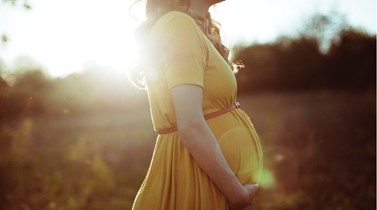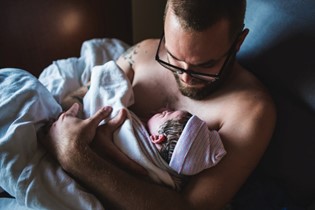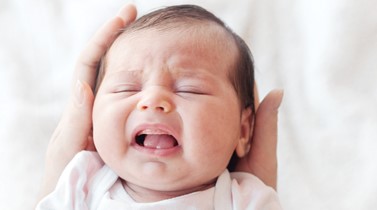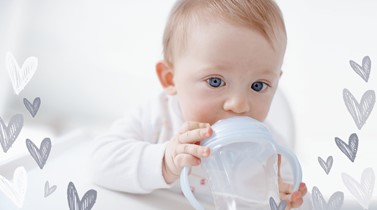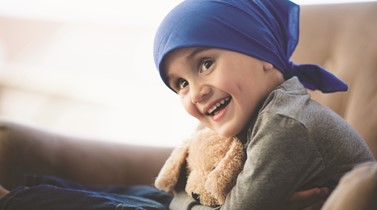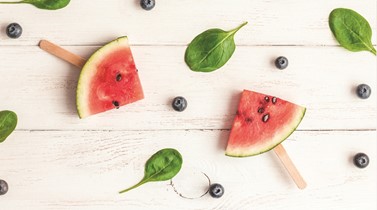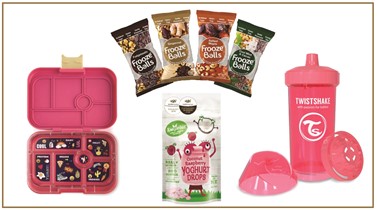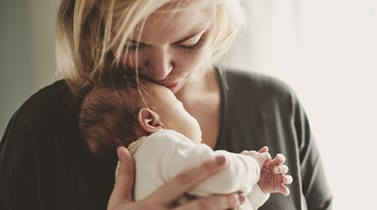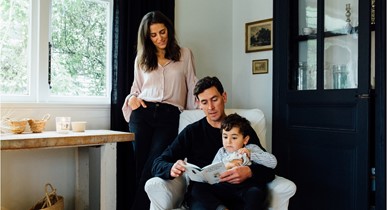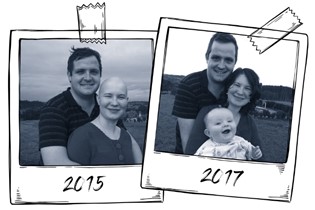Earthquakes and upheaval: helping kids cope with trauma
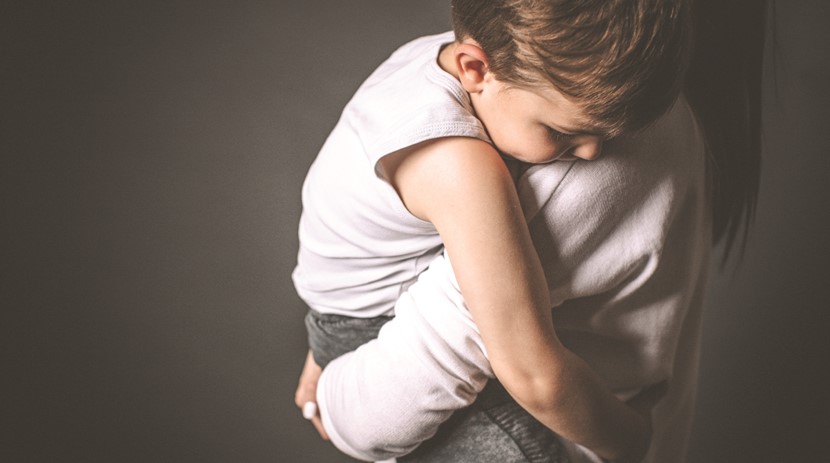
The nightmare of earthquakes has become a reality for many New Zealand children in recent years. Hannah Davison talks about a night her family will never forget and strategies for recovery.
💨 Monday 14th November, 2016, 12.02am.
💨 Depth: 15km. Magnitude: 7.8.
💨 Location: 15km north-east of Culverden. A stone’s throw from home.
It was like a monstrous hand grabbed me, shaking me awake. “Hugo! Earthquake! It’s big. Get to the children”, I said to my husband as I jumped out of bed. My pulse rocketed. I grabbed my dressing gown, sliding my phone into the pocket. A part of me knew I would not be going back to bed.
Our four-year-old son woke, bleary and confused as I put my arms around him. “It’s okay, darling, it’s just an earthquake”, I said, steadying myself against the bedframe. The monster roared on, forcing movement into the rigid fibres of the house.
The earth growled. Furniture clapped and busted itself against the walls, glass and china shattered as it hit the floor. Long seconds stretched out into minutes. I felt it would never end. Or was this the end? My voice struggled to reach Hugo as I called out over the noise. He stood, completely starkers, in the doorway, trying to keep his balance with our two-year-old daughter in his arms. We were not ready for this. All we could do was clutch the soft little bodies of our babes while we lied to them that it was going to be okay.
Outside, things playfully trickled down the corrugated iron roof. Connections struggled to fire in my slow reptilian brain as I made sense of
it. “The bricks are coming down! The chimneys are falling! We’ve got to get out!”, I yelled, unable to hide my rising panic.
The house was giving up. I wrapped my son around the front of my body, our most vulnerable organs pressed together between us. We made for the stairs as the shaking weakened. We felt our way down through a super-moon’s luminescent light and descended into a cloud of plaster dust.
Hugo made for the front door. Our little girl with scruffy hair and pink pyjamas had her tiny arms wrapped around his neck. I looked past them through the window, the moonlight illuminated a chimney collapsed in pieces on the lawn. Brick fragments continued to skip off the roof above. Hugo couldn’t hear me yelling “Not that door, not that door!”.He kept moving towards it, Frankie in his arms. “Stop! We can’t go that way!”
Making our way towards the kitchen, we found our supply of torches and clicked uselessly as one after another failed to work. The shaking started again. This time the monster’s roar soon subsided, leaving us in dead silence. Using flashlights on our phones, we lit our way, pushing open the kitchen door and sweeping aside with it a mass of broken china. My bare feet brushed through the mess.
Outside, we strapped the children in their carseats. A fallen chimney lay in front of the car, bricks were scattered around it. Panic and shock collided. I desperately wanted to get us somewhere safe. Hugo ran back inside for a few clothes, nappies and the dog.
My mother-in-law called. They were fine. I barely let her talk before telling her we were coming. “The chimneys are down, the house is wrecked”, I told her.
Jumping in the driver’s seat, I briefly noted I may well be going forth into a new world with nothing at all, not even a pair of knickers. I turned the key. Nothing. The battery was dead. I looked up at the chimney, it had more to give and we were underneath it. Our son was shaking, his face bloodless. Our daughter just damn annoyed she was out of bed.
I searched for our emergency jump starter kit and, with shaking hands, tried to assemble it under the popped bonnet while soothing the children as they cried. “It won’t bloody work!”, I yelled to Hugo as he emerged from the house with bags and an absolutely rigid dog. He took over, pointing out it might work better if it was plugged in properly. He’s good in an emergency.
The car started and we backed away. We turned off the house’s water and electricity. It felt like switching off the life support. Euphoria and disbelief took hold as we finally hit the road. We were safe, we were out, we were escaping. I joked about getting a new kitchen.
Limestone cliffs reached high above as we drove up the Waipara Valley. Huge boulders had slipped over the road, so we jumped out and rolled them out of the way. I felt true terror. This could go so wrong. Maybe the night’s horror hadn’t finished with us yet. We moved enough boulders to get by, praising the high clearance of our vehicle. Then we came to another slip and repeated the process. Our son vomited all over himself. We bumped and slid over the remaining rocks which scraped the bottom of the car. The skin on my hands was stinging and raw and I felt glass in my feet, but we arrived at last. My mother-in-law’s partner opened the door. “Any room at the inn?”, I asked.
The aftermath
While we were all traumatised by the earthquake and aftershocks that followed, it was worst for our four-year-old, Alex. At age two, our daughter Frankie didn’t have much comprehension of what had happened. Other than interrupted sleep for a brief time, she seemed to return to normal.
Alex remembers everything in minute detail. While we were running around, he was taking it all in. Bricks were a real concern for him. I’m sure that my reaction to hearing them fall played a big part. He’d react to sudden noises, became clingy and over-sensitive. He felt the “scary house” was to blame. We tried to explain things and make him feel as secure as possible.
His age has been a blessing as he still lacks inhibition. He talks freely and spontaneously about what happened that night and how he felt. One day, on the way to preschool, he tried to describe what happened to him when he was frightened. “When I’m scared, my teeth go up and down really fast, and I get sick on myself”, he said. “That’s when your teeth are chattering”, I said, “and that won’t happen every time you’re scared. That was a huge earthquake, the biggest one I’ve ever been in. It was a really scary time. I was scared too.”
No parenting books prepare you for what to say to your child if they have been through trauma. I was all at sea. I thought the best I could do was talk about it as much as he needed, acknowledge his feelings and be honest with him. I reassured him that the house we are in now is safe and there are no bricks in sight!
I’ve been fortunate to get to know Therapeutic Play Specialist Abby Linn from Creative Coping (creativecoping.co.nz). Abby has been able to give some practical advice to help us support Alex as he recovers from this trauma.
It’s been six months now and the horror of that night has diminished. As much as possible, a sense of normality has been restored and we feel that, as a family, we are more resilient as a result of what we’ve experienced. Now we’re determinedly focussing on the future.
Ask an expert
Earthquakes are not something you can control, which is what makes them so scary, particularly for children. Abby Linn offers this advice, which could be applied to a range of traumatic events.
💨 1. Focus on information
During an earthquake, calmly explain the situation in words the child can understand. Tell them what you know and what will happen next, eg “Tonight we will all stay together in the shelter”. After the earthquake, use age appropriate information about what earthquakes are and how they happen. Encourage questions.
💨 2. Offer reassurance
Encourage children to talk about what they felt and experienced, either face-to-face or while you’re doing an activity. This helps them process and gives you an insight into their thoughts. Your experience and theirs will be completely different. You’re in action mode, they observe everything. Seeing adults in a state of panic can be unsettling. Try not to deflect their worries. What they are feeling is real to them. Acknowledging this will reassure your child you understand what they are going through. Use a reassuring tone and repeat positive phrases such as “That was scary, but we’re safe now”. Offer a strong physical presence and contact. Spend time with your children and keep them close.
💨 3. Talk about being prepared
Empower them with what they know and can control. If your child has experienced an earthquake, explain that they’re an expert and have learnt what to do. Run through where you store emergency items, or create a civil defence kit together. Make a list of emergency contacts and practise drills. Knowing there is a plan and that you’re prepared gives kids a sense of control.
💨 4. Keep to a routine
Children find security in routine, and a sense of ‘life will go on’ helps them feel safe. Maintaining normal routines (eg bedtime, mealtimes and kindy) as much as possible is extremely beneficial. Reduce change to a minimum. When change is necessary, take time to prepare children for it.
💨 5 Changes to expect in children
Anxiety is normal and can be expressed in different ways:
💨Developmental regression
💨Different sleeping and eating patterns
💨Crying, distress or irritability
💨Withdrawing or isolating themselves
💨Fear of the dark or being alone
💨Reluctance to go to school/preschool
💨Flashbacks/nightmares
💨Increase in physical complaints, such as headaches or sore tummy
💨6. Manage your own anxiety
Children then see and learn that stress is manageable, and this helps to build their own coping mechanisms and resiliency. Take time out when you are feeling overwhelmed. Ask others for help, and if needed, seek professional help. Try not to discuss your worries in front of your children.
💨7. The future
Encouraging children to help enables better recovery and coping. Find ways for them to help in the clean up or family activities. Even in difficult situations, identify some positive aspects. Stay hopeful and reassure your child about the future.
Hannah Davison is a freelance journalist, blogger and writer of children’s fiction. She lives on a farm in North Canterbury with her family. Visit her at hannahedavison.com.

AS FEATURED IN ISSUE 39 OF OHbaby! MAGAZINE. CHECK OUT OTHER ARTICLES IN THIS ISSUE BELOW


